Celia Reisman currently has a solo show at the Paul Thiebaud Gallery in San Francisco up until June 13.
I had the pleasure of interviewing Celia Reisman back in 2011. A year or so ago Celia contacted me again to ask about what living in San Diego was like and any suggestions I might have to help with her moving out here. Since then we’ve become good friends. We both painted suburban neighborhood scenes and while we have very different styles, we shared many opinions about what makes for great painting. Regretfully, for me, Celia will be moving back to the east coast at the end of this summer but getting to know her over the past year and watching how she approaches painting has opened my mind to many new directions for my own work.
I’m increasingly drawn to painting that is less about technical virtuosity and more how paint not only connects visually but also emotionally to a place. Celia’s paintings visually summarize as opposed to geographically mapping a place. She paints her neighborhoods as if they were a still life arrangement. The proportional relationships between things always seem to be in a state of flux, the foliage and houses move closer together or further apart, elements are removed or added. She is arranging the shapes that make up the color feeling, personality and mood of the scene. To me, this can make a more memorable view and a clear sense of that particular place, far more interesting than just getting the exact street address. Celia isn’t “nailing” the color, or seeking pitch-perfect observed color notes—instead she prefers to distill the scene through her ideas about big shapes of colors which starts talking to each other in the paint, an open, animated conversation that is constantly changing to best suit her vision for the paint. There is no confusion about who made these paintings, they are uniquely hers.
Larry Groff: What was it like for you moving here to San Diego from Philadelphia? How did this move influence your painting?
Celia Reisman: I’ve lived in Philadelphia for over 30 years. My husband, who was ready to retire, was offered a job with a non-profit organization in San Diego. My willingness to move across the country was based in part because our daughter was living in Los Angeles and I would be closer to her.
I also felt that here was another adventure; an opportunity to experience a new place, with new locations and I was willing to leave a secure environment for the unknown. I was excited about the prospects.
Shortly after settling in I became seriously ill. During my recovery I started to feel a real urgency—take advantage of the opportunity of being in a new location and just respond to my environment—I told myself. My hesitations about what to paint, and how to paint it flew out the window. When I had the energy to explore, I accepted my immediate responses to a visual encounter out in the world. A green house with a strange trumpet-like plant was not to be believed so I started drawing.
I used my time judiciously—while in the studio, to focus on developing a clearer approach, thinking out new ways to start and organize a painting and in ways to limit my color choices. I’m a planner, going step by step—not so much of a spontaneous fluid painter but a more deliberate one—so setting up my own guidelines was helpful with the limited time and energy I had while recovering.
I knew that moving from the east coast to the west coast would open up a whole new visual experience. Before moving here, when I visited my daughter in Los Angeles, I started looking at California neighborhoods, make drawings from the car (my roaming studio) and began this new series even before we moved west. Once I moved to San Diego I found the exotic foliage, the piled-up and closely placed together architecture, and the quality of light all presented major and exciting differences from the east.
LG: Did this differences cause your work to change that significantly?
CR: My choice of subject matter didn’t change – it always seems to stem from my immediate surroundings and nearby neighborhoods. Wherever I land, be it Philadelphia, Vermont, foreign countries or California I stay close to home. I really love to look around and find domestic places that have a quirky quality because of some ornament, color or foliage. It’s ultimately the combination of all the elements that make a scene resonant visually. They really are pretty ordinary, nothing exceptional or interesting about the place I select and yet I find them captivating. Almost like an outdoor still life.
LG: The light and colors of Southern California seem ideal for your explorations with color. When I first arrived here in the spring of 2007 and looked out the window as the plane was landing and thought, ‘this is crazy—the trees are blue!’ Jacaranda trees with their lavender-blue flowers and similar exotic plantings might seem exaggerated or surreal to east coast viewers but they are actually common and what you can see all year round. Could you say something about how the different color experiences of the west coast has influenced your painting? Or is it more just a continuation of what you’ve been doing all along?
CR: I’ve always been attracted to color in the landscape looking for some distinguishing color, like a red bush or a yellow umbrella. Out here it’s been easier to find those experiences with pink houses, purple trees, bougainvillea, a constant array of color that seems to change every few weeks. So in addition to the Dr. Seuss like plants out here, the surrounding color also creates a somewhat surreal and visually exotic experience. It’s a constant bombardment of visual inspiration which I try to capture.
San Diego has influenced me to push my palette to brighter greens, reds, oranges etc., colors that are not so abundant back east, finding an excuse to use them. I’ve tried to run with it, exaggerate and use a stronger palette. I’ve also tried to create a color world for each painting so it gives off a sensation or glow of a certain temperature or feeling. In some of the paintings I would limit the palette. For example in Birdcage I used basically a complimentary palette; chrome green, vermillion, winsor green, naples yellow and white. Rather than sticking to subtle grays that one can get with this combination, I use more heightened color. In the past I would make a tree trunk purple, that would feel right. So that tendency still exists to push the color to its extreme and it’s easier to do out here. I think of the Fauves and how they would use color to create space. I still rely somewhat on naturalistic relationships, grass is green etc but then I take liberties the same way I do with drawings.
LG: How has it been to live so far away from all your east coast painter friends and the great museums and galleries?
CR: In many ways I was looking forward to moving away from the Philadelphia and New York art centers. I wanted some distance and a quieter studio experience without so many external influences. In San Diego there is much less connection with other artists and not as much stimulation with regard to seeing exhibitions or having discussions about shows and art in general. However, after living here for awhile, I found that I missed that part of my life and wanted to access it even if I choose to not participate.
But as I near the end of my stay here, the distance for this time period brought me has been beneficial. Many painters make a choice to leave art communities and make their work in more private settings. Maybe it’s my age but I feel that it’s more important to make work that is personal and that resonates internally than worrying about how others will respond. Removing myself for a while to have an inner dialogue rather than an external one helped me to move my work forward.
I don’t always trust my choices but more and more I am trying to let instinct and experience guide me. I can be easily influenced by a comment or an exhibition and bring those voices into the studio. It can distract me and make me feel that I’m on the wrong track. So the distance from the exterior art world that I’ve gotten here in San Diego has been good because it’s really been only me and my vision.
It’s not as if I would have so many studio visits back east but more that I would bring outside influences into my studio. Everyone’s a critic, commenting on the quality, execution, range, ability of each artist—even though we are a small community of artists. I was tired of hearing the comments and just wanted to stop those external influences. What I need is a balance between a quiet, internal process and stimulation from the outside. Out here I had lots of quiet. When I return east I plan to find the right combination of quiet and stimulation.
LG: You don’t seem as interested in painting naturalistic light and space and instead engage with highly personalized goals for your painting. I can imagine some more traditional painters objecting, saying your colors are too saturated or the space is too flat. How would you respond to that?
CR: With regard to using naturalistic light and space I would say that that approach obviously doesn’t interest me. It’s like comparing apples and oranges. It’s a totally different experience and way of looking and way of making a picture. My concerns and reasons for making a decision is not towards a conventional, classical space but a more abstract construction of space relying on scale, overlap, repetition, etc. rather than atmospheric perspective or gradation of form.
I admire traditional painters but we all don’t paint and see in the same way. Sometimes painters who working more traditionally don’t understand what I’m doing, or don’t try to figure out my thinking process. But I think it’s exciting to see how many different ways one can make an image while looking at the same scene. How we interject our ideas onto a flat surface can be personalized and based on a different set of criteria. Following a guideline means you’re only looking through one kind of conceptual framework. To tinker, experiment, play off of those guidelines can be jolting and different in a way that is not always appreciated. I accept that.
In my work, so much runs contrary to the “right” way to make a landscape painting. I blame it on my undergraduate training where we painted freely, making abstract work. Over the years I have learned how to construct a landscape in a more traditional way, but truly my brain doesn’t work that way. Even if I begin a work more traditionally, I lose interest. I have developed a way to work from observation that feels right for me and it is the way I can find order out of the chaos of a complicated scene that’s in front of me.
LG: What are some ways where your work veers off from the more traditional ways of making a landscape?
CR: I always start from observation, making a drawing which can begin with the smallest detail. The next step is based on the first, with the drawing slowly building, composing as I go, selecting parts of the scene that fit into a composition. I am creating an order not based on foreground to background but distribution of visual elements. The composition builds based on the balance of darks to lights, straight edges to curved, bright color to dull. I may use shadows in one part of the drawing and exclude shadows elsewhere. The logic and construction of the picture develops like a collage, or like writing using stream of consciousness where one thing leads to the next. I move around, changing points of view, and scale to assemble the parts into a whole. The white of the paper sometimes reads as a positive, in other places a negative but visually creates a flowing shape that ties the smaller parts together. The overall balance and design comes from the selection process, including parts of landscape and excluding others.
The overall goal is to make paintings that are believable not because they follow an external construct. At times I wish I could make work that used the logic of alternating darks to lights in a recession of pictorial space but it doesn’t suit me. I lose interest. With this body of work I looked at Bonnard landscapes and realized that he created very large areas of dark and light so when starting the studio paintings I divided up areas into large darks and lights. Although the end result still has many complicated elements to it, I felt that the underlying organization was based on a simple structure, and that helped to uncover an order with overall value and color.
(Interview continues…)
My personal decision to continue in this vein means that the work has its own idiosyncratic qualities. I need to honor and embrace them and even exaggerate the pictorial, emotional and psychological qualities of these paintings which are mine alone.
LG: Couldn’t you make these paintings completely from invention? Why do you still need to be tied to observation in some manner for your work?
CR: As far as working from observation, I always need to start a painting with something that comes from the world around me. I sometimes wondered what it would be like to be put in an empty room and asked to make art. I would be at a loss. I need to see something first to imagine and then go from there.
“Things are complex to me, and I have tried to order the images into a clear world that we all recognize, even with its contradictions. Sometimes the trees don’t obey the seasons and hills don’t sit in the right location, but I try to use nature to create a picture that feels right for me and reminds me of the place that was the original inspiration for the picture.”


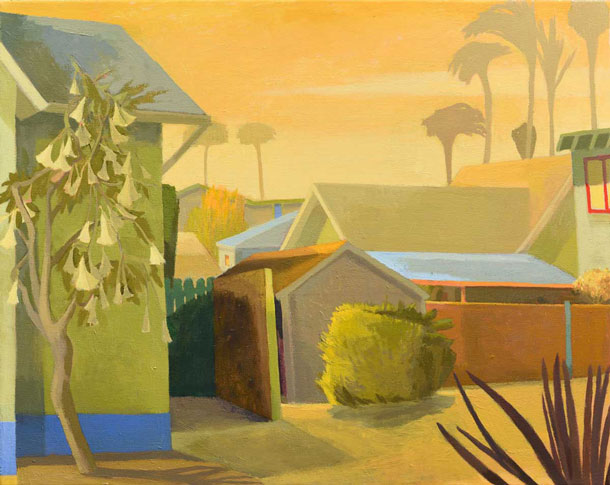
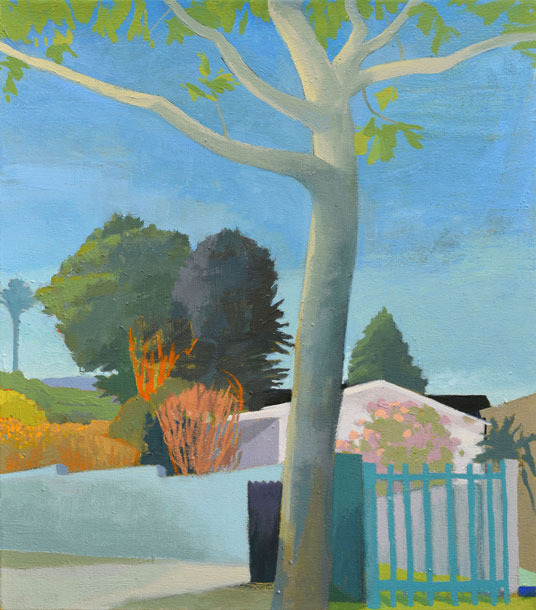
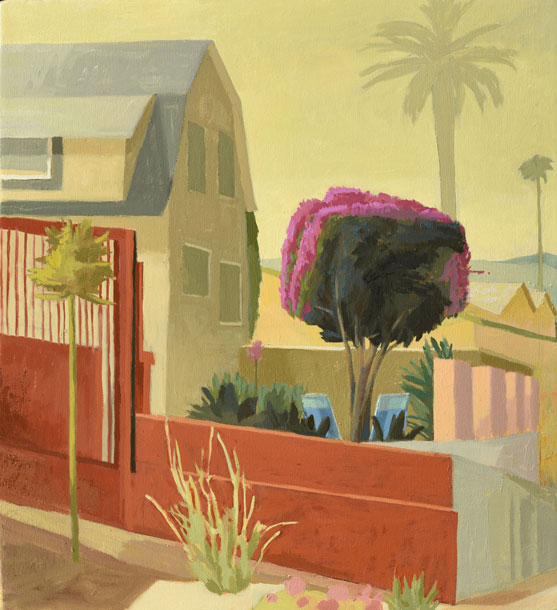
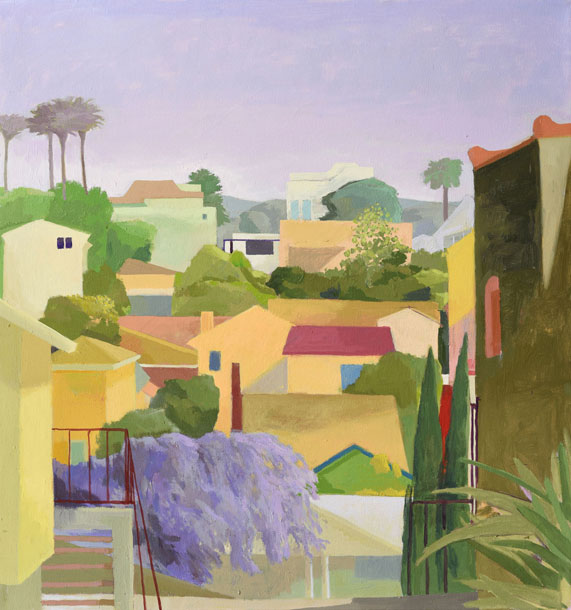
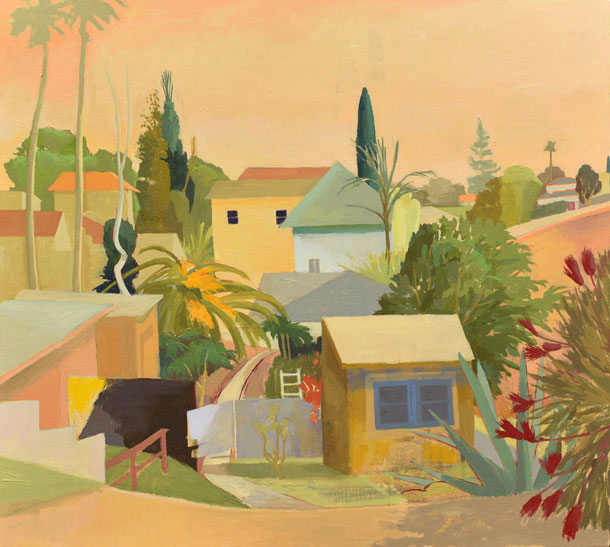
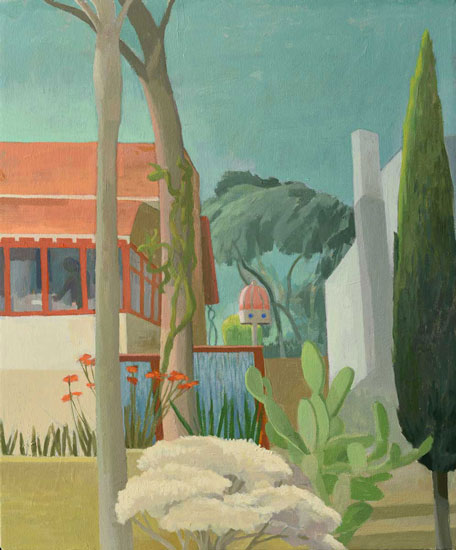
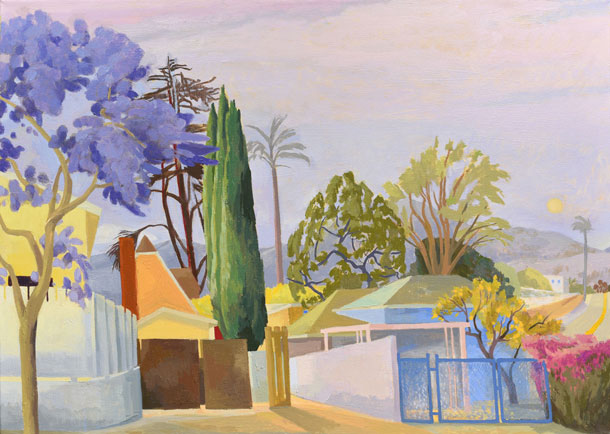
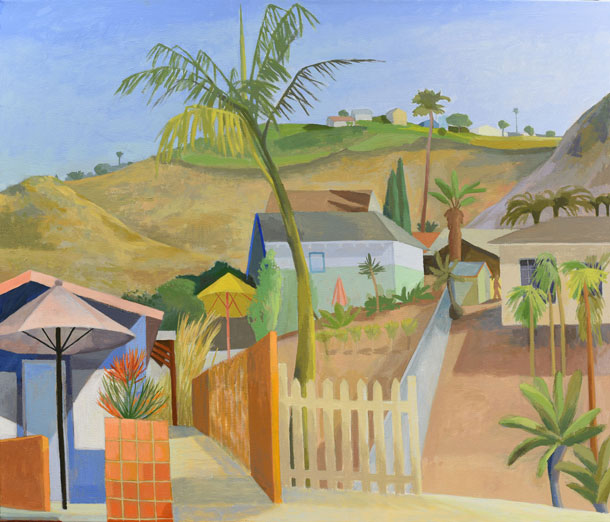
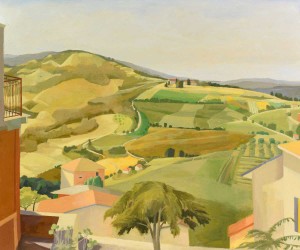
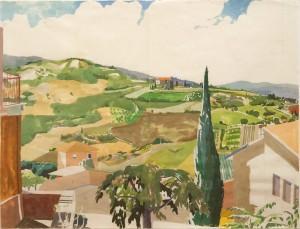
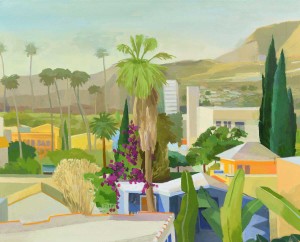
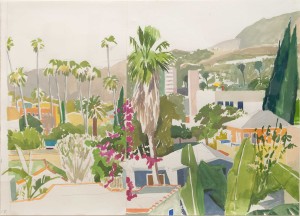
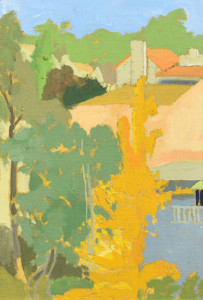
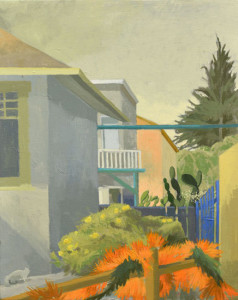
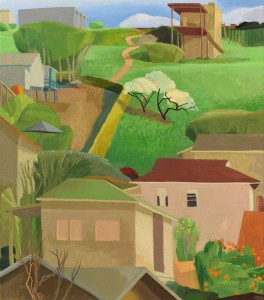
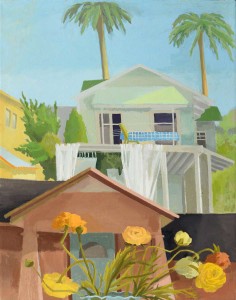
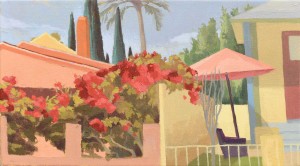

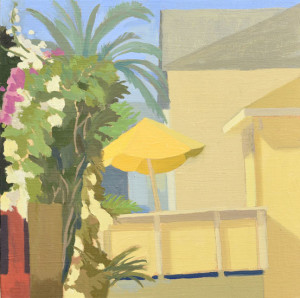
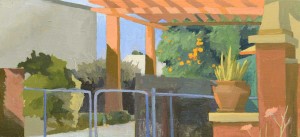
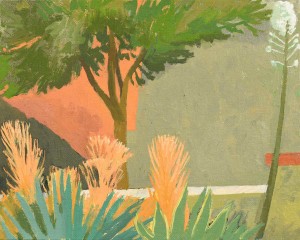




Larry, Thanks for this! I really love this new work! There is something about new places… Again, thanks! -Kevin
enjoyed this interview and the paintings. Thanks for finding Celia Reisman,
best,
Lydia
Wonderful interview and beautiful work. Thank you for introducing her work to me.
Extraordinary transition. Captures the
California Southwest perfectly, with a simplified nuance of style.I adore these.
Wonderful work and excellent interview. I have the pleasure of owning one of MS Reisman’s paintings (for several years) and never tire of it; there is always something special in the colors, arrangement, perception and paint that make it constantly new. Thanks for this first rate illustrated and insightful article.
DS
Fantastic questions. Probing and revealing interview. I have known Celia for many years and am a major admirer of her work, but the added dimension of this interview is yet another revelation to her unspoken expressions through her work. She is an amazing artist and a multi-dimensional woman. Thanks so much for this incredible new chance to see the California paintings. I am excited for her return and to read more of your interviews.
It was very interesting to see some of the studies for the oil paintings. Are the studies in watercolor? I enjoyed seeing what gets polished or edited out, and what forms get moved around in the final version. Great light quality and they definitely capture the quirky forms and colors of CA…thanks to the both of you